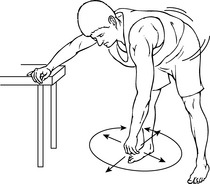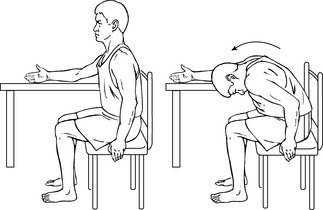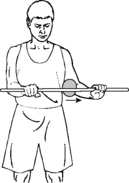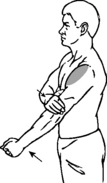Shoulder Stiffness/Frozen Shoulder/Adhesive Capsulitis
Common signs and symptoms
• Uncommonly, numbness or paralysis in the upper arm from pinching, stretching, or pressure on the nerves
Causes
• Stiffness may occur after major or minor injury, and pain may limit any desire to move the shoulder.
Preventive measures
• Attempt to move your shoulder after an injury, if allowed by your physician, to limit the stiffness in the joint.
Medication
• Nonsteroidal antiinflammatory medications, such as aspirin and ibuprofen (do not take if surgery is planned within 7 days), or other over-the-counter pain relievers, such as acetaminophen, are often recommended. Take these as directed, and call your doctor if any bleeding, stomach upset, or allergic reaction occurs.
• Stronger pain relievers may be prescribed. Use these only as directed, and take only as much as you need.
• Cortisone may be injected into your shoulder joint or near the rotator cuff to reduce the inflammation and pain to allow you do to the exercises; however, the number of cortisone injections you can have is limited, as they may weaken or damage muscles and tendons.
When to call your doctor
Range of Motion and Stretching Exercises
Shoulder Stiffness/Frozen Shoulder/Adhesive Capsulitis
Range of motion  shoulder pendulum
shoulder pendulum
1. Lean forward at the waist, letting your weak arm hang freely. Support yourself by placing your opposite hand on a chair, table, or counter as shown.
2. Sway your whole body slowly, forward and back. This will cause your arm to move. Let your arm hang freely, and do not tense it up.
3. Repeat the above, swaying side to side and moving in circular patterns, clockwise and counterclockwise.
Range of motion  shoulder flexion, single arm
shoulder flexion, single arm
1. Lie on your back and grasp the bottom of a stick, handle of an umbrella, or blade of a golf club in the hand of your weak arm as shown.
2. Using the stick, raise your arm overhead as shown, until you feel a gentle stretch. Lead with your thumb in a “thumbs up” position.
Range of motion  shoulder flexion
shoulder flexion
1. Stand near a wall as shown, and slowly “walk” your fingers up the wall, until you feel a gentle stretch.
Range of motion  shoulder external rotation
shoulder external rotation
1. Lie on your back or stand with your weak arm at your side and your elbow bent to 90 degrees. Hold a stick, umbrella handle, or golf club in your hand as shown.
2. Using the stick, rotate your hand and forearm away from your body as shown. Make sure you keep your upper arm and elbow close to your side.
Strength  shoulder flexion, isometric
shoulder flexion, isometric
2. Place your other hand on top of your arm, and push down as hard as you can without having any pain and without moving your arm.
Strength  shoulder abduction, isometric
shoulder abduction, isometric
2. Place your other hand on top of your arm, and push down as hard as you can without having any pain and without moving your arm.
Strength  shoulder external rotation, isometric
shoulder external rotation, isometric
1. Bend the elbow of your weak arm to 90 degrees, holding your arm slightly in front of you as shown.
3. Try to rotate your arm outward, away from your body, as if it were a gate swinging open. Resist this motion with the hand over your wrist. Do not let any motion occur.
Stay updated, free articles. Join our Telegram channel

Full access? Get Clinical Tree






 shoulder flexion
shoulder flexion





 shoulder internal rotation, isometric
shoulder internal rotation, isometric




